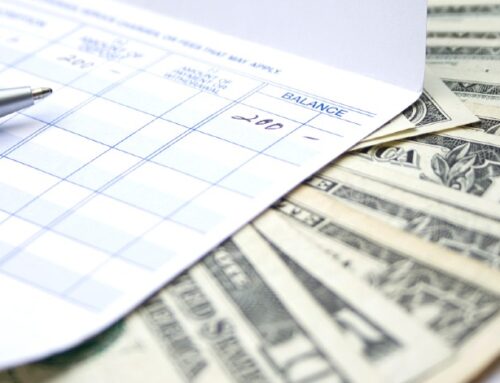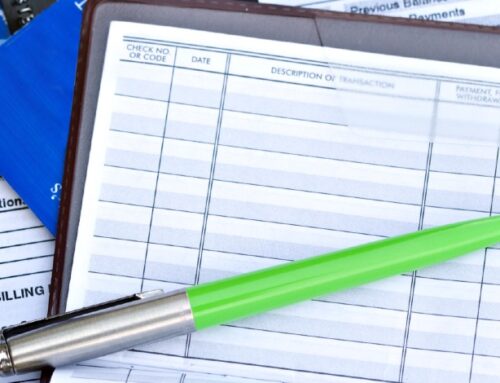Digital wallets, or e-wallets, have become a go-to solution for many people to manage payments. By storing your personal banking information securely on your phone, these tools offer convenience, speed, and enhanced security.
But as with any financial technology, it’s essential to understand how to use them, whether e-wallets are safe, and what else to know about digital wallet security and risks.
What Are Digital Wallets, or E-Wallets?
A digital wallet is an electronic device or software that allows you to make transactions electronically. It stores your credit card, debit card, and even loyalty card information, enabling you to pay with a simple tap or scan.
Popular examples include Apple Pay, Google Wallet, and Samsung Pay. These wallets are linked directly to your bank accounts or cards, making it easy to shop online, pay bills, and even send money to friends or family.
4 Benefits of Digital Wallets
1. Convenience
E-wallets eliminate the need to carry physical cards, cash, or even a wallet. Everything you need for payments is stored on your smartphone, making it easier to manage your finances on the go.
Whether you’re paying for groceries, ordering food online, or splitting the bill with friends, digital wallets make transactions seamless. With just a tap or scan, you can complete payments quickly without fumbling for cash or cards.
Many e-wallets sync across multiple devices, such as smartphones, tablets, and smartwatches. This means you can make payments or access your wallet from any compatible device, enhancing flexibility.
2. Speed
Digital wallets significantly reduce the time it takes to complete a transaction. In physical stores, you can simply tap your phone against a payment terminal to pay, avoiding the time-consuming process of swiping cards or counting cash.
When shopping online, e-wallets often autofill your payment and shipping information, speeding up the checkout process. This can be especially beneficial when shopping on multiple websites or during sales events when time is of the essence.
Sending money to friends or family is quicker with digital wallets. Whether splitting a dinner bill or paying rent, you can transfer funds instantly, eliminating the need for cash or checks.
3. Enhanced security
E-wallets use advanced encryption to protect your payment information. Instead of sharing your actual card details with merchants, digital wallets use tokenization, which substitutes your card number with a unique code for each transaction. This reduces the risk of your information being stolen during a data breach.
Most digital wallets offer biometric authentication options, such as fingerprint scanning or facial recognition. This adds an extra layer of security by ensuring that only you can authorize transactions.
Digital wallets are designed with security features that protect your transactions even when shopping online or making payments remotely. For instance, some wallets require additional verification steps for high-value transactions, reducing the risk of unauthorized purchases.
In the event that your phone is lost or stolen, many digital wallets allow you to quickly lock or remove your cards from the wallet remotely. This prevents unauthorized access to your funds, providing peace of mind.
4. Budget management
Digital wallets often come with features that provide real-time insights into your spending habits. You can view recent transactions, categorize your spending, and track where your money is going, helping you stay on top of your budget.
Many e-wallets allow you to set up alerts for certain spending limits, helping you avoid overspending. This can be particularly useful for managing discretionary spending or sticking to a budget.
Some digital wallets integrate with other financial services, such as savings accounts or investment platforms. This allows you to manage multiple aspects of your finances in one place, simplifying your financial life.
How to Set Up a Digital Wallet
Setting up a digital wallet is a straightforward process that typically takes just a few minutes. Here’s a step-by-step guide to get you started:
- Choose your wallet app: Depending on your device, download a digital wallet app like Apple Pay (for iPhones), Google Wallet (for Android devices), or Samsung Pay. You can find these apps in your device’s app store.
- Add your payment information: Once the app is installed, open it and follow the prompts to add your credit or debit card information. You can do this manually by entering your card details or by taking a photo of your card using your phone’s camera.
- Verify your information: For security reasons, your bank or card issuer may require you to verify your identity before you can start using the wallet. This might involve entering a verification code sent via SMS or email, or completing a phone call with your bank.
- Set up default payment method: If you add multiple cards, you can choose which one to use as your default payment method. This will be the card charged automatically when you make a purchase using your digital wallet.
- Enable security features: Make sure your digital wallet is secured with strong authentication methods like a passcode, fingerprint, or facial recognition. This will help protect your wallet if your phone is lost or stolen.
- Start using your wallet: Once set up, you can start using your digital wallet to make purchases. Simply hold your phone near a compatible payment terminal and authenticate your transaction to complete the payment.
With these steps, your digital wallet will be ready to go, offering a quick and secure way to manage your payments.
How to Use a Digital Wallet Safely
Are digital wallets safe? They are, if they’re used correctly. There are ways to secure your own digital wallet and use it without exposing yourself to danger. Here are some good safety tips.
Use strong authentication
Most digital wallets offer biometric authentication methods like fingerprint scanning or facial recognition. These methods are more secure than traditional passwords or PINs, as they require physical traits unique to you, making it much harder for unauthorized users to access your wallet.
Wherever possible, enable multi-factor authentication (MFA), which adds an extra layer of security by requiring more than one form of verification. For example, after entering your password, you might also need to approve a login attempt via a notification on your phone or enter a code sent to your email.
Regularly monitor transactions
Make it a habit to review your bank statements and digital wallet transaction history regularly. This helps you quickly identify any unauthorized transactions, allowing you to report them promptly and minimize potential losses.
Many digital wallets and banking apps allow you to set up alerts for specific activities, such as transactions over a certain amount or when a new device logs into your account. These alerts can provide immediate notifications of suspicious activity.
Update your software
Regularly update your digital wallet app to ensure you have the latest security patches and features. Developers frequently release updates to fix vulnerabilities, so staying up to date is crucial for your wallet’s security.
Ensure that your smartphone’s operating system is also up to date. Operating system updates often include security improvements that protect your device and any apps installed on it.
Be cautious with public Wi-Fi
Public Wi-Fi networks are often less secure and can be vulnerable to hackers. Avoid using it to access your digital wallet or perform sensitive transactions. If you must use public Wi-Fi, consider using a Virtual Private Network (VPN) to encrypt your internet connection and protect your data.
Disable the automatic connection to Wi-Fi networks on your device. This prevents your phone from connecting to insecure networks without your knowledge.
Secure your phone
A strong passcode adds a layer of security to your phone, making it harder for someone to access your digital wallet if your device is lost or stolen. Avoid easily guessable passcodes like “1234” or “0000.”
Many smartphones allow you to remotely lock or wipe your device if it’s lost or stolen. Ensure this feature is enabled, so you can protect your data if your phone goes missing.
Beware of phishing scams
Cybercriminals often use phishing emails or fake websites to trick users into providing their digital wallet credentials. Be cautious about clicking on links in emails or messages, especially if they claim to be from your wallet provider and ask for personal information.
Only download wallet apps from official app stores (like the Apple App Store or Google Play Store) and verify the developer’s authenticity. Avoid downloading apps from third-party sources, as they may contain malware designed to steal your information.
Keep Your Money Safe With AZCCU
Secure digital wallets offer a convenient and secure way to manage your finances, but like any technology, they come with their own set of risks. By understanding these risks and taking proactive steps to protect your information, you can enjoy the benefits of a digital wallet while keeping your data safe.
Arizona Central Credit Union is ready to help with all your banking needs, from checking to savings to loans. If you have any questions, contact us online or call (866) 264-6421.




